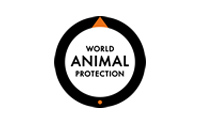Benka and Boone et al (2022)
Benka, V. A., Boone, J. D., Miller, P. S., Briggs, J. R., Anderson, A. M., Slootmaker, C., Slater, M., Levy, J. K., Nutter, F. B., & Zawistowski, S. (2022). Guidance for management of free-roaming community cats: a bioeconomic analysis. Journal of Feline Medicine and Surgery, 24(10), 975–985. https://doi.org/10.1177/1098612X211055685
Computer simulation model used to estimate and compare costs of different free-roaming cat management options.
Parkes et al 2014
Parkes, J., Fisher, P., Robinson, S., Aguirre-Muñoz, A. (2014) Eradication of feral cats from large islands: an assessment of the effort required for success. N. Z. J. Ecol., 38 (2), 307-314. http://www.jstor.org/stable/24060808
Review of cat eradication programmes on 6 islands leading to an estimate of 5.2 ± 1.6 years of effort to extirpate cats from 1000 ha of habitat, assuming a closed population and dedicated staffing (543 ± 341 annual person-days). States the resources needed to maintain such an intensive program often exceed the capacity of many land managers.
Herrera et al 2022
Herrera, D.J. Dixon J.D, and Cove, M.V. (2022) Long-term monitoring reveals the value of continuous trapping to curtail the effects of free-roaming cats in protected island habitats. Global Ecology and Conservation, (40) e02334. https://doi.org/10.1016/j.gecco.2022.e02334.
Study of camera-informed trapping and killing of feral cats in the Florida Keys. Starts with the statement that “the removal of cats is costly, labour-intensive, and often demands more resources than land managers have at their disposal”.
3 unpublished KAP studies
Respondents to KAP surveys in Bangkok, Thailand – 0% selected culling for dog management; Dhaka, Bangladesh – 3.6% selected culling for dog management; a Saudi Arabian community – 0.3% selected culling for cat management.
Munir et al 2023
Munir, S.M.I., Mokhtar, M.I. & Arham, A.F. (2023) Public perspectives on strays and companion animal management in Malaysia. BMC Public Health 23, 1428. https://doi.org/10.1186/s12889-023-16276-5
Questionnaire survey conducted in the Klang Valley region in Malaysia found 1.8% agreed with shooting and 9.4% with ‘euthanasia’ (presumably humane methods of culling) of stray animals. In comparison 40% agreed with rehoming and 34% with CNVR.
Townsend et al 2013
Townsend, S. E., Sumantra, I. P., Pudjiatmoko, Bagus, G. N., Brum, E., Cleaveland, S., Crafter, S., Dewi, A. P. M., Dharma, D. M. N., Dushoff, J., Girardi, J., Gunata, I. K., Hiby, E. F., Kalalo, C., Knobel, D. L., Mardiana, I. W., Putra, A. A. G., Schoonman, L., Scott-Orr, H., … Hampson, K. (2013). Designing Programs for Eliminating Canine Rabies from Islands: Bali, Indonesia as a Case Study. PLoS Neglected Tropical Diseases, 7(8). https://doi.org/10.1371/journal.pntd.0002372
Study and simulation of canine rabies transmission on Bali under different vaccination strategies, indicated how counterproductive human-mediated movement of dogs can be to rabies control and highlighted that such movement was increased in Bali when some dog owners moved their dogs to avoid culling teams or replaced their dogs that had been culled.
Morters et al 2013
Morters, M.K., Restif, O., Hampson, K., Cleaveland, S., Wood, J.L. & Conlan, A.J. (2013) Evidence-based control of canine rabies: A critical review of population density reduction, Journal of Animal Ecology 82(1), 6–14. http://dx.doi.org/10.1111/j.1365-2656.2012.02033.x
A review of the evidence of rabies control and dog and wildlife population reduction. Includes the description of replacement of culled vaccinated adult dogs with purchased unvaccinated puppies in the village of Kelusa, Bali.
Hampson et al 2009
Hampson, K., Dushoff, J., Cleaveland, S., Haydon, D. T., Kaare, M., Packer, C., & Dobson, A. (2009). Transmission dynamics and prospects for the elimination of canine Rabies. PLoS Biology, 7(3), 0462–0471. https://doi.org/10.1371/journal.pbio.1000053
Contract tracing and calculation of R0 of rabies transmission between dogs in 2 locations in Tanzania; both locations had R0~1.2 despite large differences in dog density (9 vs 1 dog per km2). Also calculated R0 from published outbreaks in other countries; R0s between 1.05 and 1.85 with no conspicuous relationship along the wide range of dog densities reported for these locations.
Windiyaningsih et al. 2004
Windiyaningsih C, Wilde H, Meslin FX, Suroso T and Widarso HS (2004) The Rabies Epidemic on Flores Island, Indonesia (1998-2003), J Med Assoc Thai, 87 (11), 1389–93.
Observational study of the 1997 outbreak of rabies on Flores, followed by mass culling of dogs 70% of the dogs in outbreak district of East Flores, some citizens moved their dogs to other districts and rabies was seeded across the island, culling was expanded but rabies was not controlled and became endemic.
Putra et al 2013
Putra, A. A. G., Hampson, K., Girardi, J., Hiby, E., Knobel, D., Wayan Mardiana, I., Townsend, S., & Scott-Orr, H. (2013). Response to a rabies epidemic, Bali, Indonesia, 2008-2011. Emerging Infectious Diseases, 19(4), 648–651. https://doi.org/10.3201/eid1904.120380
Report on the emergency response to the rabies outbreak on the island of Bali in 2008, including culling of free-roaming dogs with strychnine baits or darts and limited vaccination with poor quality vaccine which failed to contain the outbreak and rabies spread across the island.











